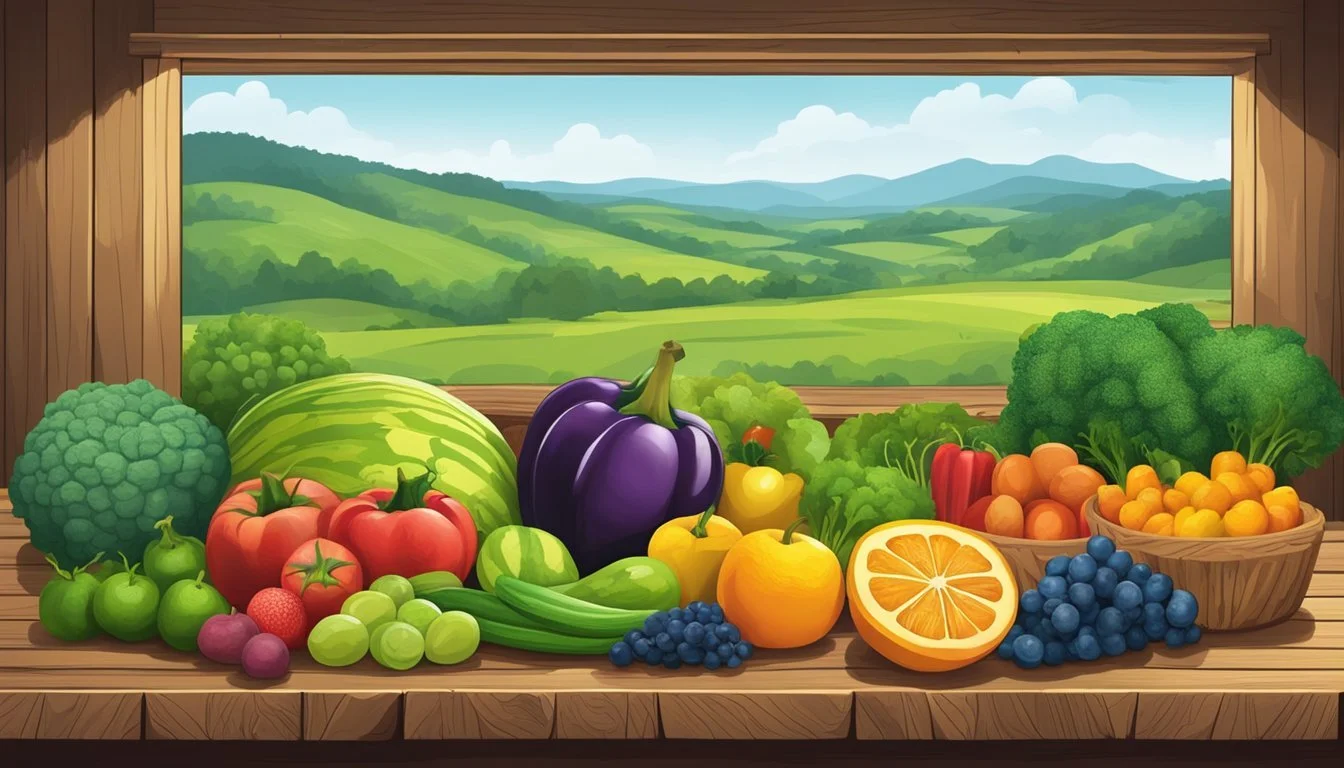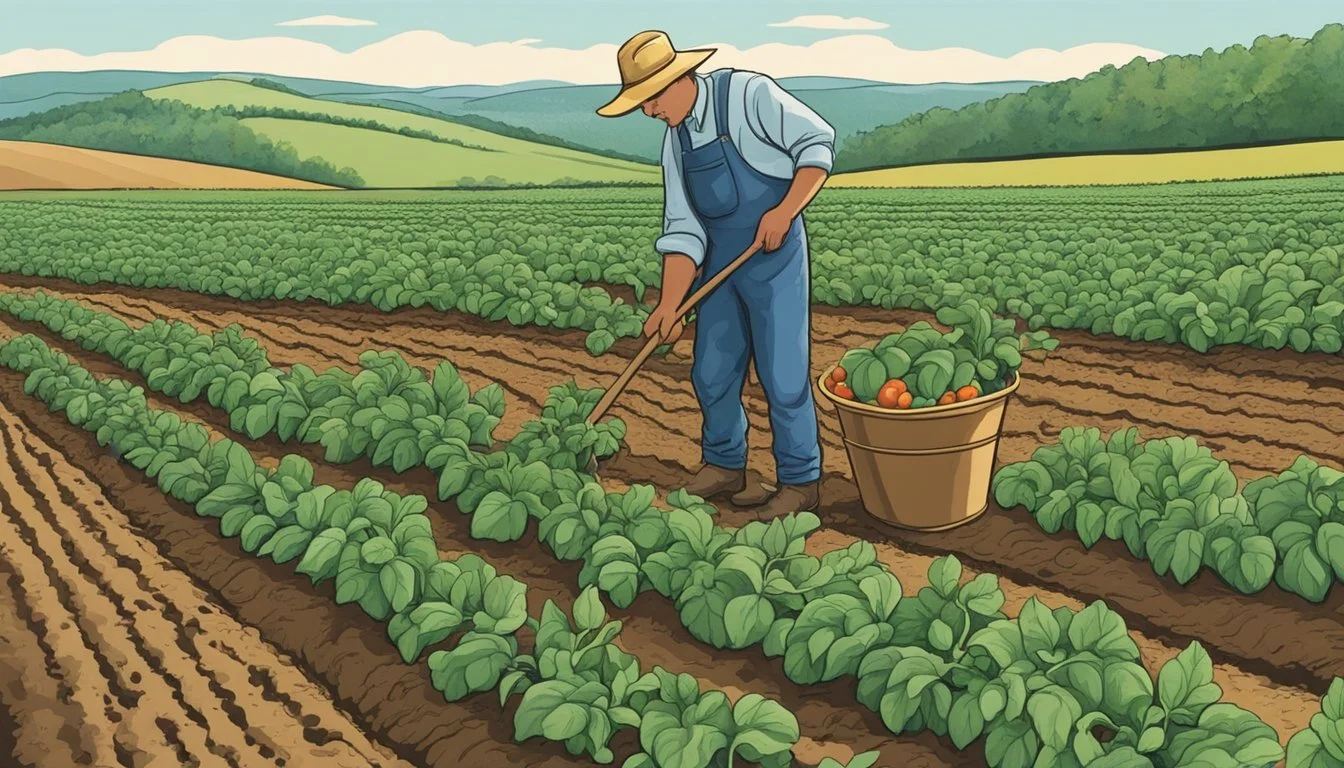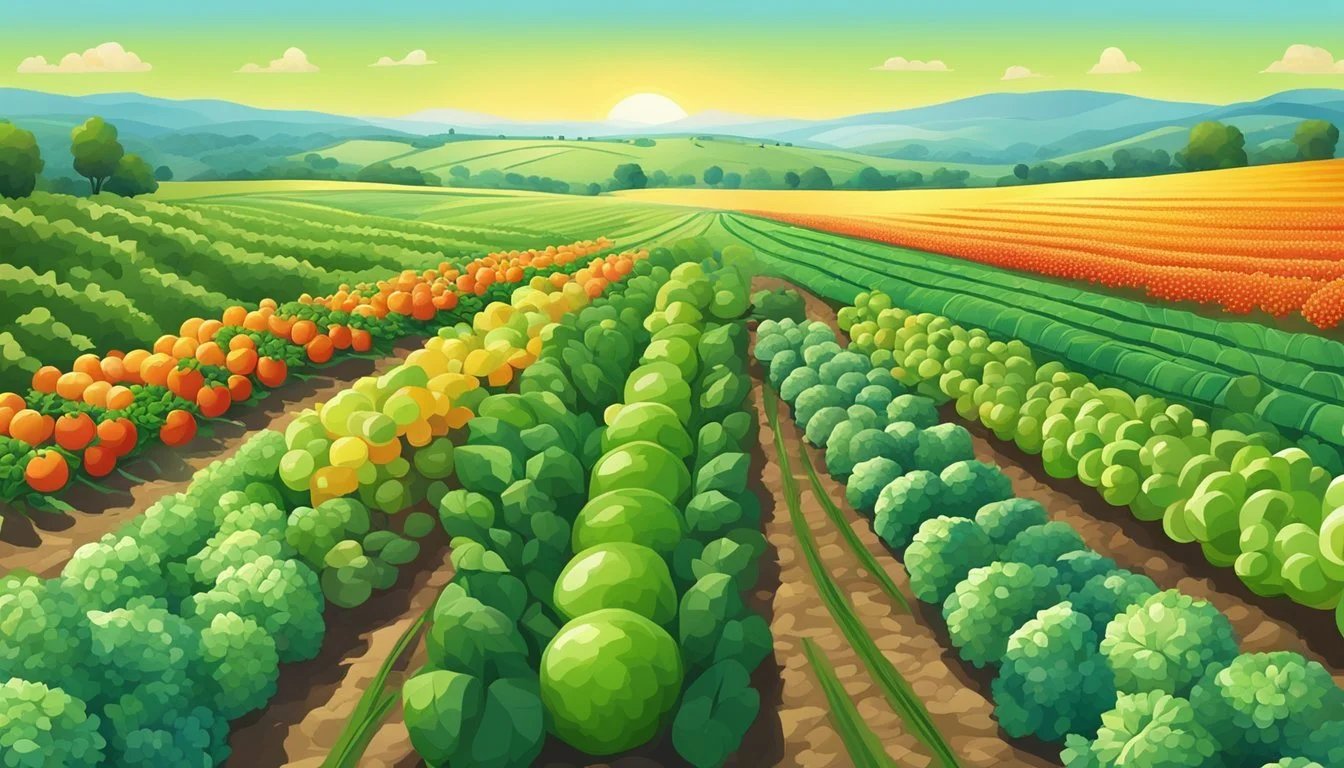West Virginia Seasonal Fruit & Veg Guide
Your Year-Round Companion
In West Virginia, the farm-to-table movement is more than a trend; it's a testament to the state's rich agricultural heritage and commitment to preserving the integrity of its food. As the seasons change, so too does the array of fresh produce available at local markets. This guide provides an overview of the seasonal fruits and vegetables that define West Virginia's local cuisine, ensuring that residents and visitors alike can partake in the freshest flavors the state has to offer.
The Mountain State boasts a variety of climates and terrains, allowing for a diverse range of produce to flourish. From the sweetness of summer strawberries to the earthy robustness of fall root vegetables, each period of the year yields its own bounty. West Virginia's farm-to-table produce includes favorites such as crisp arugula in late spring and juicy watermelons at summer's peak, culminating in an autumnal harvest of persimmons and plums.
Understanding the seasonal availability of local produce not only supports West Virginia's farmers but also enhances the dining experience. Seasonal fruits and vegetables are often more flavorful and nutritious, elevating the simple pleasure of a meal to a celebration of regional resources. Through conscious consumer choices, farm-to-table advocates can enjoy the state’s seasonal best while contributing to a sustainable food economy.
What’s in Season in West Virginia Right Now?
Understanding West Virginia's Seasons
West Virginia's distinct seasons significantly influence its agricultural outputs. The state's climate sets the stage for a variety of seasonal produce available throughout the year.
Overview of West Virginia's Climate
West Virginia experiences a humid subtropical climate in the lower parts of the state, while higher elevations may have a humid continental climate. It is crucial for one to understand these climate variations as they directly affect the growing seasons and the types of fruits and vegetables that can be cultivated efficiently during different times of the year.
Seasonal Weather Patterns
The state's weather patterns are diverse, with each season bringing a distinct set of conditions:
Spring: Moderate temperatures with increased rainfall, which nurtures the growth of a wide range of spring fruits and vegetables.
Summer: It is warm and humid; this season is ideal for the flourishing of summer crops.
Fall: Cooler temperatures and less humidity characterize this season, perfect for autumnal crops.
Winter: This season brings colder temperatures and often heavy snowfall to the region, especially in the mountains, leading to a dormant period for most farming activities.
The variation in temperatures and precipitation levels throughout the year must be considered when planning crop planting and harvesting in West Virginia.
Seasonal Farm to Table Guide
West Virginia's farm-to-table movement thrives on a clear understanding of seasonal produce. This guide will navigate through the state's seasonal offerings, ensuring that the freshest fruits and vegetables are savored at their peak.
Spring Produce Selection
Spring in West Anglia heralds the arrival of asparagus, strawberries, and tender green onions. Root vegetables like turnips and beets also begin to make an appearance, along with leafy greens such as spinach and various types of lettuce.
Asparagus
Strawberries
Green Onions
Turnips
Beets
Spinach
Lettuce
Summer Abundance
By summer, from July to September, fields are lush with a colorful assortment of fruits and vegetables. Blueberries, peaches, tomatoes, and corn (how long does corn last?) come to the forefront, with a variety of melons including watermelons and cantaloupes reaching peak sweetness.
Tomatoes: July - September
Corn
Blueberries
Peaches
Watermelons
Cantaloupes
Autumn Harvest
Autumn's cooler temperatures bring forth pumpkins and apples, alongside root vegetables like carrots and potatoes. Cruciferous vegetables such as broccoli and Brussels sprouts (how long do brussels sprouts last?) mature, while kale, chard, and leeks offer hearty green options.
Pumpkins
Apples
Carrots
Potatoes
Broccoli
Brussels Sprouts
Kale
Chard
Leeks
Winter Offerings
When winter sets in, the focus shifts to storage produce and hearty winter greens. Root cellars are filled with onions, garlic, and cabbages, ensuring a continuous supply. Green beans and a variety of herbs can be cultivated in more controlled environments.
Onions
Garlic
Cabbages
Green Beans
Herbs
Local Farm-to-Table Businesses
West Virginia’s commitment to fresh, locally-sourced produce has fostered a rich environment of farm-to-table businesses. These range from markets that gather the best of local fare to restaurants that curate seasonal menus, with sustainability being a key focus throughout.
Markets & Restaurants
In West Virginia, Capitol Market in Charleston stands out as a hub for farm-fresh goods. It offers a year-round indoor market with an array of local produce, meat, and seafood. The market also supports local restaurants, such as Fish Hawk Acres, which provide global cuisine with a farm-to-table ethos. Similarly, Morgantown Farmers Market boasts over 40 vendors, becoming a go-to place for not only fresh fruits and vegetables but also for free-range eggs and locally-sourced honey.
Farm-to-Table Dinners
Farm-to-table dinners are emblematic of West Virginia's agritourism scene. These events often called "Farm-to-Table Dinners," showcase meals and beverages sourced directly from West Virginian producers. They are not only culinary feasts but also a testament to local agriculture, enhancing diners’ connection with where their food originates. Chefs from around the state, including those in the Kanawha Valley, are at the forefront, preparing dishes that highlight all-natural ingredients.
Sustainability and Agriculture
Sustainability is key in West Virginia’s agriculture, with organizations imbibing nonprofit structures to support this. J.Q. Dickinson Salt-Works, nestled in the Appalachian Mountains, is an exemplar of this ethos, producing all-natural salt through sustainable practices. These entities not only contribute to local economies but also help maintain the integrity of the state’s rich land, ensuring that farm-to-table remains a viable future for West Virginia.
Monthly Planting and Harvesting Calendar
In West Virginia, the cadence of planting and harvesting is dictated by the region's distinct seasons, which influence what produce is available at different times of the year. February does not typically present ideal conditions for outdoor planting due to the risk of frost, but it is an excellent month for starting seeds indoors for future transplanting.
Spring Planting Dates: Starting indoors in late February to early March, gardeners can prepare seeds for crops like sweet corn, which is a staple in many West Virginia gardens. As one approaches the frost-free date around April 20th, these seedlings will be ready for outdoor transplanting.
Month Seeds to Start Indoors Transplant or Direct Sow Outdoors February Sweet Corn, Tomatoes, Peppers — March — Hardy vegetables like peas and spinach April — Sweet Corn, Beans, Root Vegetables
Harvest Timings: The timing of harvests in West Virginia varies with each crop, largely influenced by the planting date and the growing conditions.
Month Harvesting Begins For June Early-planted vegetables July Sweet Corn, Tomatoes August Full variety of produce
Gardeners in West Virginia eagerly anticipate the summer months when fresh, local produce like sweet corn becomes plentiful. These harvests typically continue through to October, until the first killing frost arrives around October 20th. Keeping up with the calendar for planting and harvesting is vital to maximize yield and enjoy fresh fruits and vegetables at their peak.
Supporting Local Agriculture
Supporting local agriculture in West Virginia means engaging with a network that values freshness and community. This section will explore the structured framework of Community Supported Agriculture (CSA) and the multiple benefits that eating locally offers to individuals and the community as a whole.
Community Supported Agriculture (CSA)
Community Supported Agriculture, commonly known as CSA, represents a partnership between local farms and residents. It is an arrangement where individuals purchase shares of a farm's upcoming harvest. They receive regular distributions of locally grown produce, typically on a weekly basis. This model ensures that local farms have a consistent market for their crops, while city dwellers and community members gain access to fresh, seasonal produce. West Virginia hosts various CSA programs, connecting consumers directly with the agricultural bounty of the region.
Examples of local CSAs in West Virginia:
The Morgantown Farmers Market CSA
North Bend CSA
Benefits of Eating Locally
Eating locally sourced food has manifold benefits for health, economy, and the environment. When community members choose local produce, they consume fresher options that are often more nutrient-dense due to reduced time between harvest and consumption. Economically, money spent on local foods circulates within the community multiple times, strengthening the local economy. Furthermore, buying locally reduces carbon footprints since food travels shorter distances from farm to table.
Key Benefits:
Freshness: Locally grown fruits and vegetables are fresher.
Economic Support: Spending on local produce bolsters the community's economy.
Environmental Impact: Shorter travel distances mean reduced transportation emissions.
By choosing CSA programs and local produce, individuals contribute to a sustainable agritourism model that preserves West Virginia's agricultural heritage and fosters community resilience.
Preparing and Preserving Seasonal Produce
In West Virginia, seasonal fruits and vegetables such as berries during the summer or apples in the fall offer fresh and vibrant flavors. Proper preparation and preservation enable the enjoyment of these flavors year-round.
Cooking and Recipe Ideas
One can highlight the taste of fresh berries and stone fruits by incorporating them into summer salads or desserts. Vegetables like tomatoes are great for sauces or salsas, while herbs such as basil can enhance the culinary experience either used fresh or in a pesto. When cooking with these seasonal stars, it's best to use simple recipes that let their natural flavors shine.
Berries: Blend into smoothies, or use as toppings for yogurt or oatmeal.
Stone fruits: Perfect for grilling or baking in pies and tarts.
Tomatoes and Herbs: Ideal for fresh sauces, bruschetta, or summer pastas.
Preservation Techniques
The following techniques ensure that the abundance of seasonal produce can be savored well beyond their harvest season.
Freezing: A straightforward method to preserve fruits and vegetables at their peak. For instance, berries can be frozen on a baking sheet before transferring to airtight containers, which will prevent clumping.
Fruits: Berries, peaches, and plums can be frozen on a tray and then stored.
Vegetables: Blanch and freeze items like green beans, broccoli, and peas.
Canning: This method is suitable for acidic foods like tomatoes, and involves sterilizing jars and processing them in a water bath to seal in the freshness.
Tomatoes: Can be canned as sauces, salsas, or whole.
Pickling: Works well with cucumbers and other crisp vegetables.
Proper labeling and dating of preserved items help ensure safety and best flavor when using preserved produce.
Nutritional and Health Benefits
Consuming fresh produce from West Virginia's farms has significant nutritional advantages. Fruits and vegetables, when harvested in their peak season, contain higher levels of vitamins and minerals essential for maintaining good health.
Seasonal fruits such as persimmons, rich in vitamins A and C, promote healthy skin and immune function. Watermelons, available in late summer, are a source of hydration and antioxidants. Raspberries, ripe during the early summer months, offer dietary fiber and vitamin C, supporting digestive health.
Vegetables harvested at their peak like arugula and eggplant (how long does eggplant last?) deliver optimal flavors as well as nutritional benefits. Arugula, a leafy green abundant from May to September, is high in calcium and potassium, which aid in maintaining strong bones and proper muscle function. Eggplants, with their high fiber content, contribute to cardiovascular health.
Local West Virginia farms prioritize freshness, which not only ensures tastier produce but also preserves nutritional value. Freshly picked vegetables tend to retain more nutrients compared to those that have been stored for long periods.
Season Produce Type Key Nutrients Summer Fruit Vitamin C, Fiber Late Summer Vegetable Calcium, Potassium Early Fall Fruit Vitamins A and C
Consuming farm-to-table produce supports local agriculture and ensures that one receives a bounty of nutrients essential for various body functions. It helps protect against chronic diseases such as heart disease, type 2 diabetes, and obesity, making the choice to eat seasonally and locally a wise one for health and community sustainability.









